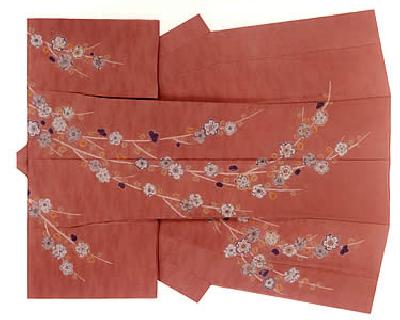Tie-dyeing is seen everywhere in the world and it is said to have been originated in India or China. It was introduced into Japan in around the 7th century and the records on this technique can be found in the Nihonshoki and the Manyoshu. From the Muromachi period through the early Edo period, a variation of tie-dyeing called Tsujigahana became very popular. As the patterns made by knotting look like spots of a deer, the fabric has been called Kanoko Shibori (fawn spot tie-dying). Kanoko Shibori was at its peak in the Genroku era (1688-1703), when sou-shibori (tied and dyed entirely), tie-dyed fabric with embroidery, and Shibori Yuzen (Yuzen painted patterns on tie-dyed fabric) were made. There are more than 50 tying techniques such as Hitta shibori (entire tying), Hitome shibori (linear tying), Kasamaki (bound) shibori, Nuijime (stitched) shibori, and Boshi shibori (tied and capped). The combination of these various tying techniques with exquisite binding and clear color contrast creates three-dimensional gorgeous patterns. This is nothing other than traditional beauty.













